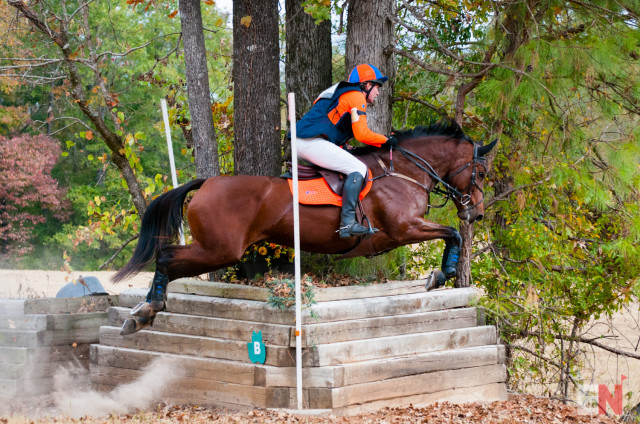What’s in Your Arena? is an EN series sponsored by Attwood Equestrian Surfaces in which riders share their favorite jumping exercises. It’s easy to get stuck in a training rut, and we hope this will inspire you with fresh ideas that you can take home and incorporate into your own programs.

Werner Geven and Reddy Or Not. Photo by Leslie Threlkeld.
Anyone who has ever ridden with Poplar Place Farm’s resident trainer, the four-star flying Dutchman Werner Geven, has likely been regularly subjected to his aptly named “Circle of Hell”. It is a staple of his program and an exercise he uses for horses at all levels. This exercise looks simple, but don’t be fooled! It is surprisingly complex and will help you develop a more independent seat, greater balance, adjustability and a keener eye.
“This exercise gives you the knowledge of where you are in front of the jump and how many strides it takes to get there at what speed,” Werner said. “It will give you independence from the horse and put the horse in a good balance. If people can do it well (in practice) they can find their striding every time (on course). If they can’t, they seem to find the unbalance and miss.”
To set up this exercise, split a 20-meter circle into quarters using four poles of equal length. Set the outside end of each pole 10 meters from the center of the circle so that the total diameter is 20 meters. Check that you’ve created four equal quadrants and that one piece of your “pie” isn’t smaller or larger than the others.
Always begin with the rails on the ground. Aiming for the middle of each rail, you should get four easy canter strides in each quadrant.
“Look up,” Werner said. “Don’t physically see the stride, feel the stride. Try to look up to the next rail not down at the ground. That is what you need to focus on, trying to find that rhythm and balance.”

Practice this in both directions until it becomes very easy for you and the horse. Only then should you increase the difficulty and ask for five strides between each rail. Make the adjustment to a shorter stride before you enter the circle, not when you’re already in the middle of the exercise.
“You’re allowed to cheat as wide as the poles are but that’s all the cheating you get. You can go outside to outside so you have more room, but you still have to collect a little more to get five and then six strides,” Werner says.
After you’ve mastered the exercise with ground rails–and Werner says it will take longer than you think–advanced combinations can set up the exercise using very small verticals. Again, start with four strides between each fence, remembering to keep your eyes up and feel the stride.
Most horses and riders will continuously practice a single Circle of Hell, adding and reducing strides more easily over time. However, we were really impressed by this clip of Werner’s longtime student, Lydia Kennedy, and her two-star horse Double Dare riding a Double Circle of Hell in four, five and six strides. (Fun fact: Double Dare is the son of 1997 Kentucky Derby and Preakness Stakes winner, Silver Charm).
“What I like most about the exercise is how much focus it takes to complete the exercise with no mistakes,” Lydia told EN. “The height of the fences are not that high however the difficulty of the exercise makes up for that. It helps me learn the striding of my horse and to remember to keep leg on to help collect his stride. It helps the adjustability of my horse more than anything. It may look easy however this is a difficult exercise to master.”
Go Eventing.


















